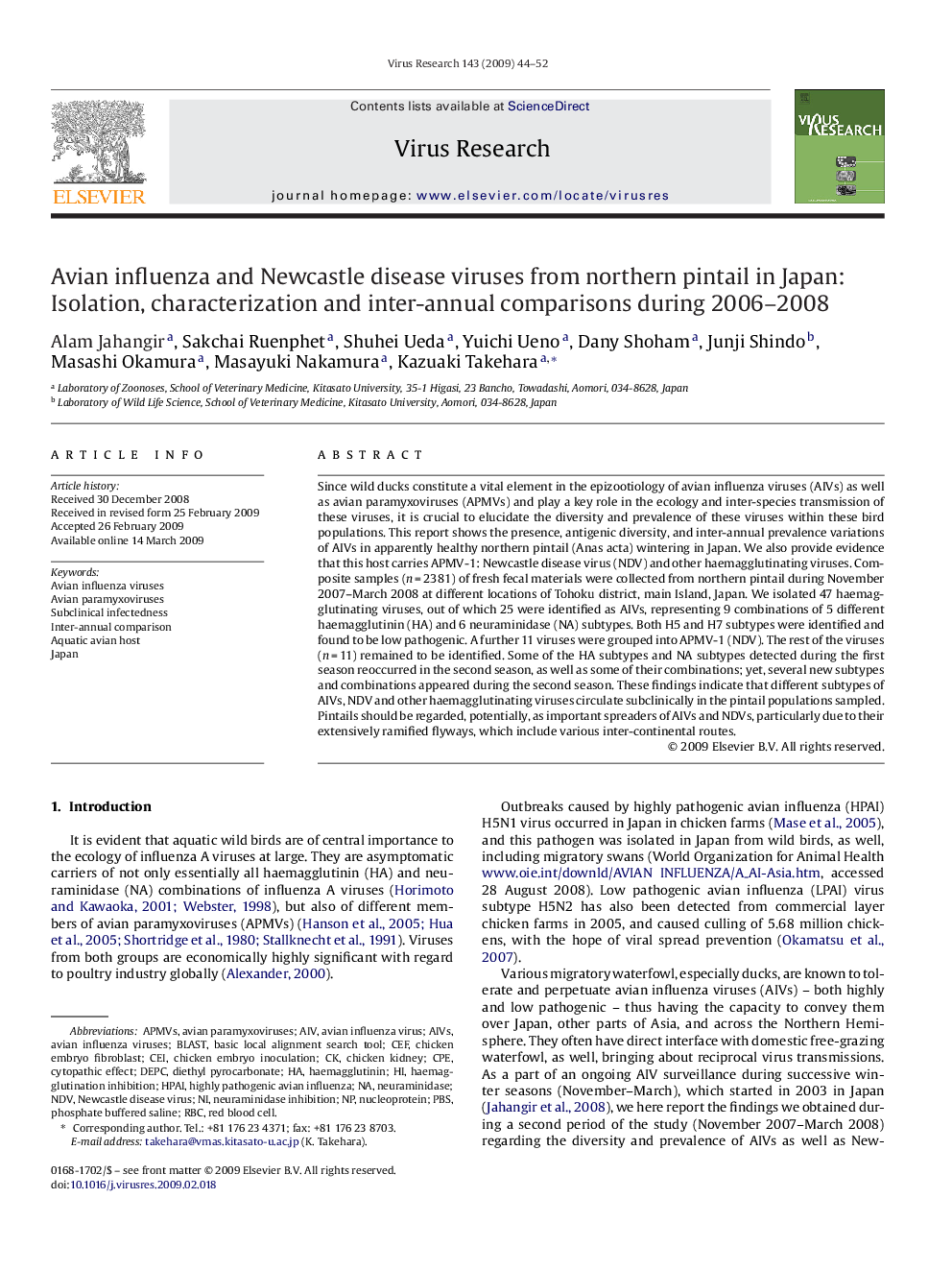| Article ID | Journal | Published Year | Pages | File Type |
|---|---|---|---|---|
| 3430021 | Virus Research | 2009 | 9 Pages |
Since wild ducks constitute a vital element in the epizootiology of avian influenza viruses (AIVs) as well as avian paramyxoviruses (APMVs) and play a key role in the ecology and inter-species transmission of these viruses, it is crucial to elucidate the diversity and prevalence of these viruses within these bird populations. This report shows the presence, antigenic diversity, and inter-annual prevalence variations of AIVs in apparently healthy northern pintail (Anas acta) wintering in Japan. We also provide evidence that this host carries APMV-1: Newcastle disease virus (NDV) and other haemagglutinating viruses. Composite samples (n = 2381) of fresh fecal materials were collected from northern pintail during November 2007–March 2008 at different locations of Tohoku district, main Island, Japan. We isolated 47 haemagglutinating viruses, out of which 25 were identified as AIVs, representing 9 combinations of 5 different haemagglutinin (HA) and 6 neuraminidase (NA) subtypes. Both H5 and H7 subtypes were identified and found to be low pathogenic. A further 11 viruses were grouped into APMV-1 (NDV). The rest of the viruses (n = 11) remained to be identified. Some of the HA subtypes and NA subtypes detected during the first season reoccurred in the second season, as well as some of their combinations; yet, several new subtypes and combinations appeared during the second season. These findings indicate that different subtypes of AIVs, NDV and other haemagglutinating viruses circulate subclinically in the pintail populations sampled. Pintails should be regarded, potentially, as important spreaders of AIVs and NDVs, particularly due to their extensively ramified flyways, which include various inter-continental routes.
